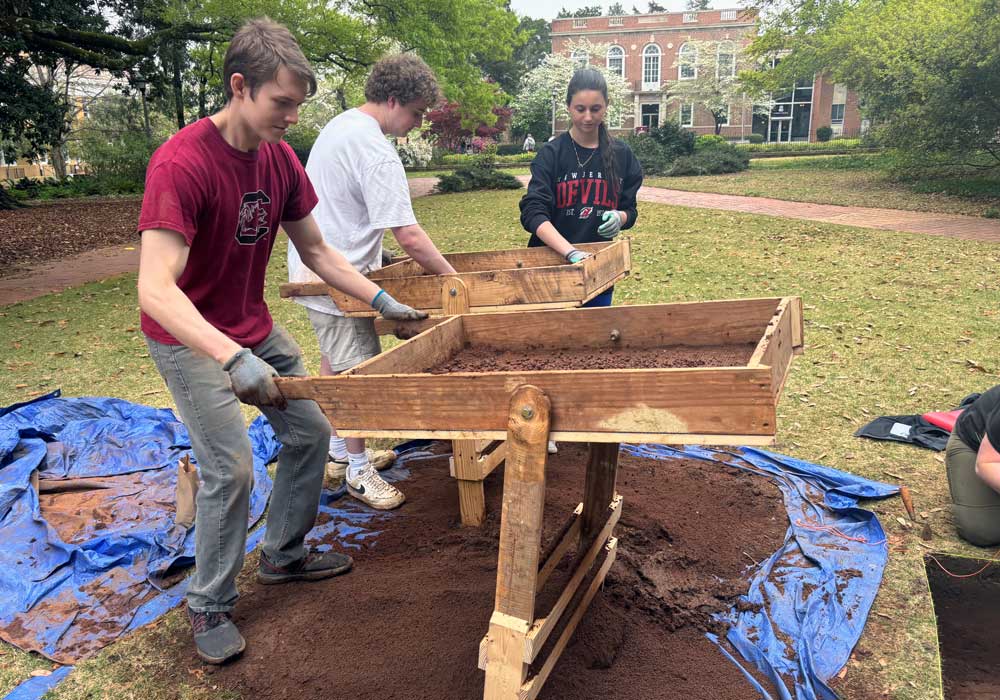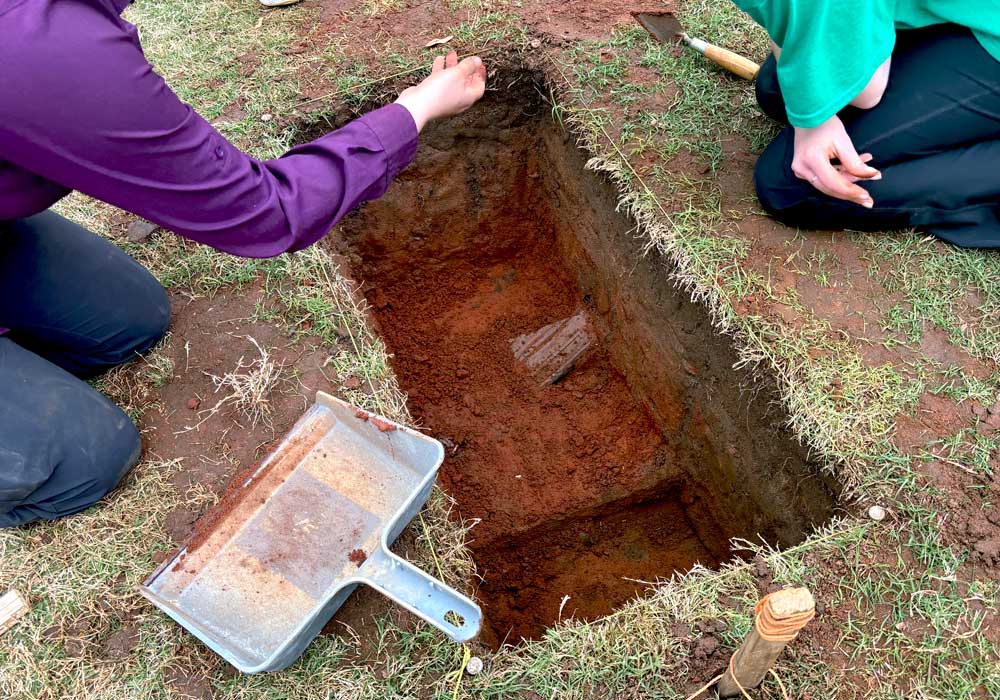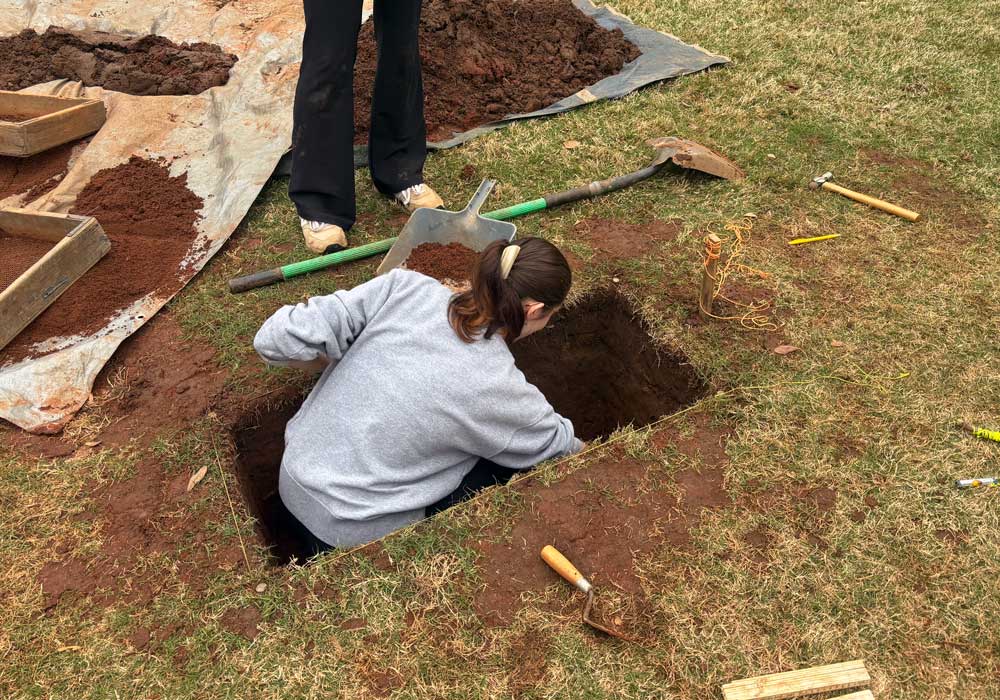If you’ve walked past the McKissick Museum, you may be wondering why groups of students are digging up dirt near its entrance.
An Honors College class is excavating the Horseshoe to raise awareness of the enslaved labor force that built the university. This is the first time in 51 years that archaeological research is being done at the heart of campus. Students in “Digging through the past: Exploring the Archaeological Resources of USC” work around three different mapped sites: the old president’s house that was demolished in 1939, enslaved quarters and an observatory.
“So far, this school has had a one-sided perspective, especially during the Civil War and segregation,” says Courtney Anderson, a sophomore accounting major. “We have to balance making our own story and getting the correct story. That’s the hard part.”
This spring course provided a fieldwork opportunity for students whose schedules wouldn't accommodate a summer dig, professor Kelly Goldberg says, adding that a highlight has been seeing students engage in experiential learning in different ways.
“We know there are these rich cultural resources here on campus,” Goldberg says. “We also want to draw attention to the fact that there are those resources that need protection and preservation.”

For sophomore anthropology major Rachel Lanning, the class has confirmed for her that she wants to do museum work in the future.
“I realized that a college can be a really useful teaching tool, and it does have an archaeological record,” she says. “Sometimes the wood’s long gone and it’s just the nail left. Thinking about how someone hammered that nail into the wood and now we’re digging it up from the ground is a really interesting experience.”
It’s not just anthropology majors who are interested in fieldwork.
Eric Burkholder, a junior computer science major, jumped on this opportunity because he enjoyed taking Goldberg’s other classes.
“It’s different from anything I’ve ever done,” Burkholder says. “Not just the process of the excavation itself, but also learning about the public duty we have to tell these stories and fight to preserve these archaeological resources we have.”
The students used ground penetrating radar to map the area before digging. They also have to work around modern structures such as the McKissick Museum. Most of the artifacts uncovered are brick, coal and glass.
But even with an archaeological map, they find surprises.
Students found ceramics, a metal tool and even a pipe. They hope to explain anomalies such as the pipe in the foundation of the president’s house through research and consulting outside experts. Students will clean found objects and use them to create an exhibit in the McKissick Museum.

Freshman psychology major Nicole Gleicher discovered a new interest.
“I want to go into law, so learning about the legal protections that exist for archaeology and historical sites has been really interesting,” she says.
Students spend roughly three hours conducting research and cataloging for every hour in the field. There are many unanswered questions, such as whether the historical map of the university from 1884 is misdrawn.
Goldberg wants to offer more hands-on experiences in the future.
“We’re hoping to do a summer field school where we’ll be able to expand with full eight-hour days to dig larger units in areas where we have ongoing questions,” Goldberg says.
Students will host a reception at the McKissick Museum to present their findings on April 17 at 4 p.m. Come find out why it’s called “the historic Horseshoe.”
